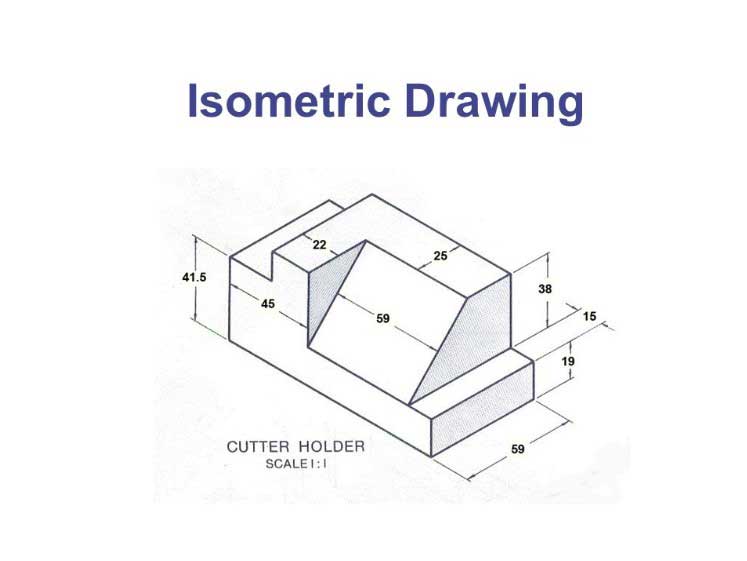Isometric projection
Table of Contents
Table of Contents
Are you struggling to draw isometric projections for your projects? Do you often find yourself frustrated when trying to depict three-dimensional structures in a two-dimensional format? Look no further! In this article, we will provide you with a comprehensive guide on how to draw isometric projections with ease.
When it comes to creating technical drawings, isometric projections can be a daunting task for many. From understanding angles and dimensions to accurately depicting the structure, the process can be overwhelming. However, with practice and proper guidance, anyone can learn how to draw isometric projections.
To start, you will need a few essential tools such as a grid paper, a ruler, and a pencil. Begin by sketching the basic structure of the object you want to depict in isometric projection on the grid paper. Next, use a 30-degree set square to draw the isometric axes. This will allow you to accurately represent the object’s dimensions and angles in the isometric projection.
To create the final isometric projection, draw the object on the grid paper using the isometric axes as a guide. Ensure every dimension and angle is accurately represented. Once you have completed the drawing, you can add shading or color to provide a more realistic representation of the object.
My Experience Learning How to Draw Isometric Projections
When I was first tasked with creating an isometric projection for my engineering class, I found the process challenging and often frustrating. However, I soon realized that the key to success was practice and asking for help when needed.
After weeks of practicing and receiving guidance from my professor and colleagues, I finally mastered the art of drawing isometric projections. Through this experience, I discovered that with patience and perseverance, anyone can learn how to draw isometric projections with ease.
Tips for Beginners Learning How to Draw Isometric Projections
If you are new to drawing isometric projections, there are several tips you can follow to make the process easier. Firstly, ensure that you have all the necessary tools and materials before starting. Additionally, practice drawing basic shapes and structures before moving on to more complex forms. Lastly, don’t be afraid to ask for help or guidance when needed.
The Importance of Accuracy in Isometric Projections
When drawing isometric projections, it is essential to ensure that every dimension and angle is accurately represented. This is particularly important in technical drawings where even minor errors can significantly impact the final product’s functionality and safety. To avoid errors, it’s always good to double-check your work before finalizing it.
Common Mistakes to Avoid When Drawing Isometric Projections
One common mistake to avoid when drawing isometric projections is the misuse of scales. Always ensure that the scale accurately depicts the object’s dimensions to avoid errors. Additionally, it’s essential to maintain consistency in your drawing, particularly when it comes to angles and dimensions.
Practice Makes Perfect
As with any skill, learning how to draw isometric projections takes practice and patience. Don’t be discouraged if you make mistakes along the way. Instead, use them as learning opportunities to improve your skills. Remember, the more you practice, the better you will become!
Question and Answer
Q: What is the best way to ensure accuracy when drawing isometric projections?
A: The best way to ensure accuracy when drawing isometric projections is to use a grid paper and a ruler. Additionally, it’s essential to double-check your work before finalizing it.
Q: How can I improve my isometric projection drawing skills?
A: The best way to improve your isometric projection drawing skills is to practice regularly and seek guidance from professionals in the field. Additionally, it’s beneficial to study existing isometric projections to gain a better understanding of the techniques and methods used to create them.
Q: Can I use software to create isometric projections?
A: Yes, there is software available that can assist in creating isometric projections. However, it’s still essential to have a basic understanding of the principles involved in drawing isometric projections.
Q: Are isometric projections commonly used in engineering and architecture?
A: Yes, isometric projections are commonly used in engineering and architecture to depict three-dimensional structures in a two-dimensional format. They are particularly useful in technical drawings as they accurately represent the object’s dimensions and angles.
Conclusion of How to Draw Isometric Projections
In conclusion, drawing isometric projections is a valuable skill for anyone in the engineering or architectural fields. By following the tips and techniques outlined in this article and practicing regularly, anyone can learn how to draw isometric projections accurately and efficiently. Remember, accuracy is key, and with practice, you too can master the art of isometric projection drawing.
Gallery
3D Shapes In Isometric Projection - Isometric Projection - Wikipedia

Photo Credit by: bing.com / isometric projection shapes example sphere dimensional librecad solides orthographic isometic exercices vocabulaire
Isometric Drawing, Projection - Its Types, Methods.

Photo Credit by: bing.com / isometric drawing ppt projection powerpoint circle draw objects types exercises presentation method create methods use
How To Draw Isometric Drawing
Photo Credit by: bing.com / drawing isometric orthographic getdrawings views draw three personal
Isometric Perspective - What Is The Meaning Of Isometric Drawing

Photo Credit by: bing.com / isometric axes freehand
How To Draw Isometric Projection Please Help ????? - Brainly.in

Photo Credit by: bing.com / isometric projection






